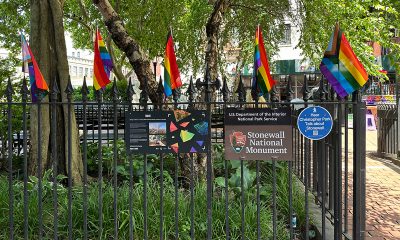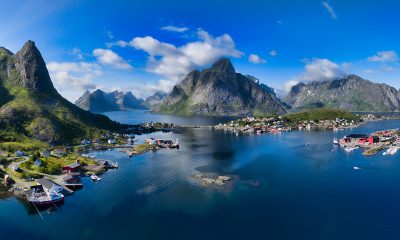Arts & Entertainment
Steps to Stonewall
Early ‘60s D.C. protests laid groundwork for riots, activists say
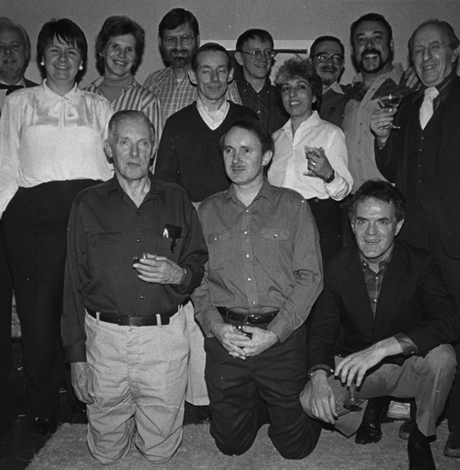
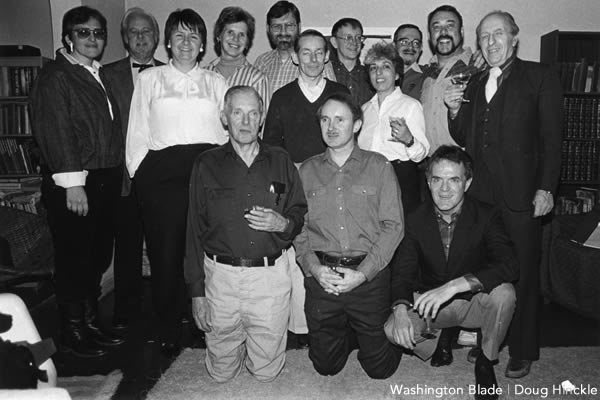
Editor’s note: This story is reprinted from the June 5, 2009 edition of the Blade.
The widely held notion that 1969’s Stonewall riots in New York’s Greenwich Village were the start of the modern gay rights movement is inaccurate local activists say as they were meeting and picketing years before.
“When people say as you so often hear, that the gay movement started with Stonewall, if I have a chance under the circumstances in which it’s said, I invariably correct them very insistently,” says Frank Kameny, 84, a legendary gay activist widely recognized as one of the great leaders of the homophile movement, as it was then known. “And point out that the movement was just sort of 20 years old already and there was a groundwork.”
Kameny and others who were involved in the early years agree, though, that Stonewall’s influence can’t be overstated, through its significance wasn’t immediately apparent.
Kameny, Lilli Vincenz, Paul Kuntzler, the late Barbara Gittings, the late Jack Nichols and others had been involved in East Coast gay activism for years. An April 1965 picket at the White House by the Kameny-and-Nichols-founded Mattachine Society of Washington was the first of its kind, but involved a small group dressed — at Kameny’s insistence — in shirts and ties for the men and dresses or skirts for the women.
“Things culturally were very, very different then,” Kameny says, describing the scene of an early picket at the Civil Service Commission to protect the inability of gays to get security clearances. “In 1965, men’s shirts were white. Period. There were no other kinds. Dress was very conservative. It changed over the next half decade, changed very significantly … but in terms of those days, if we’re gonna picket to be employed, we have to look employable by their standards.”
A handful of gay groups existed on the East Coast and met regularly as the East Coast Homophile Organizations (ECHO). Those involved say it was a different world.
“Most gay people at the time were not interested in any kind of civil rights activity,” Vincenz, 71, says. “So we were seen as kind of Don Quixotes chasing windmills. I felt they could at least give us some money, but they didn’t do that either. They were worried about their careers and they thought it was a lost cause. They couldn’t imagine it. So I was seen as a crusader and so we were a small group.”
Kameny says it soon became obvious from ECHO gatherings that D.C.’s Mattachine Society was a trendsetter taking on the Civil Service Commission, the qualification of homosexuality as an illness by the American Psychiatric Association, security clearances, the military gay ban and more.
“All those things we were doing, nobody else was doing to any meaningful extent anywhere,” Kameny says. “We had ECHO meetings in October of each year in ’63, ’64 and ’65 and monthly meetings here in Washington, Philadelphia and New York over that period and the Washington Mattachine was doing things and reporting to everyone else what we were doing. Philadelphia had two women … the New York Mattachine had monthly meetings but they were just meetings, they weren’t accomplishing anything particularly. The things that were being done were being done by us here.”
Kuntzler met Kameny one night at the Chicken Hut, a gay D.C. bar, in late February of ’62 and found a kindred spirit. He remembers the sign he made to carry in the first White House protest.
“Jack (Nichols) saw my poster and wanted it, so I let him carry it,” Kuntzler, 67, says with a chuckle. “He ended up in the front of a photo carrying my sign.”
“That was the first time we had any visibility,” Vincenz, who’ll be honored as a Pride “superhero” with Kameny at this year’s Capital Pride parade, says. “Confidential magazine picked us up and put our pictures everywhere. … We’d never had any visibility before that actually.”
One of ECHO’s signature yearly events was an Independence Day protest each year at Independence Hall in Philadelphia. The one held in 1969, though, which turned out to be ECHO’s last, was markedly different. Stonewall had happened less than a week before and changed things forever.
None of the Mattachine activists were involved in the Stonewall riots. Because it was a spontaneous event that quickly gathered steam during a then par-for-the-course police raid on the gay bar, the only people involved were those who happened to be at the Stonewall Inn, a seedy, Mafia-owned dive that attracted drag queens and homeless gay youth, that night. But they heard about it almost instantly.
“We were all in contact through ECHO, so we heard immediately of what had happened,” Vincenz says. “This was a big event that somebody had, so many people fought back against the police.”
Kameny doesn’t remember exactly whom he heard the news from first but says he was “elated.”
In Philadelphia just days later at the ECHO protest, it was clear the formal Mattachine members had some new allies.
“It looked very different,” Vincenz says. “People didn’t care about any dress rules. The Stonewall crowd came over and there we had, we weren’t supposed to have beards and sandals but now we had beards and sandals. I remember two women, black, white, holding a baby and holding hands. It was just new. And there was some of kind of disgruntlement by some of the old guard. This was a new influx of grassroots activists.”
While the Independence Day picket seemed slightly different, it became apparent that things were much different on June 28, 1970 for the first Christopher Street Gay Liberation Day March, a one-year commemoration of Stonewall that morphed into the annual Pride parades.
Kameny, who attended, was dumbfounded by the turnout.
“I remember … seeing this vast horde of people and I was absolutely speechless,” he says. “Flowing in like a river into the Sheep Meadow in Central Park. If nothing else, there it was in front of one’s eyes. It would have been impossible in terms of anything movement-wise prior to that. We had clearly overstepped a line. We had transitioned.”
Cliff Witt, a longtime local D.C. gay activist, accompanied Vincenz to the parade as a camera assistant for the film she made called “Gay and Proud.”
“I had heard of Stonewall before, but I don’t remember how I first heard,” he says. “I had many trepidations. You could not be gay in those days. Lilli was out through her Mattachine work. I agreed that I would be like the press, running along side, but not part of it.”
Back home in Washington, huge changes were underway. The Mattachine Society was winding down, eclipsed somewhat by the newly formed Gay Activist Alliance (GAA, which became the Gay & Lesbian Activist Alliance in the ‘80s), a spin-off of a similar New York group.
Stonewall’s significance is almost universally recognized but it’s not the whole story players active then say.
Kuntzler says Stonewall-type events were also brewing in Washington around that time. He recalls a May 1969 night at D.C.’s Plus One, a gay bar on 8th Street, S.E. It didn’t turn violent and wasn’t as dramatic as Stonewall, but the long line of gay men waiting to get in that Thursday night didn’t turn and run when a mammoth flock of police cars arrived.
“They hardly paid any attention (to the cops),” Kuntzler says. “It just didn’t work, so the cops went away. This was a liberation in a way, too. It was indicative of a profound psychological shift that had started.”
“It was like Stonewall started the mainstream gays,” Witt says. “It sort of started the organization of the gay liberation movement as we came to know it. … It became more militant and demanding and in your face. We weren’t polite any longer.”
Kameny puts it succinctly: “I feel we created a mindset without which Stonewall would not have occurred at all.”
Travel
Manchester is vibrant tapestry of culture, history, and Pride
Alan Turning Memorial is among English city’s many attractions
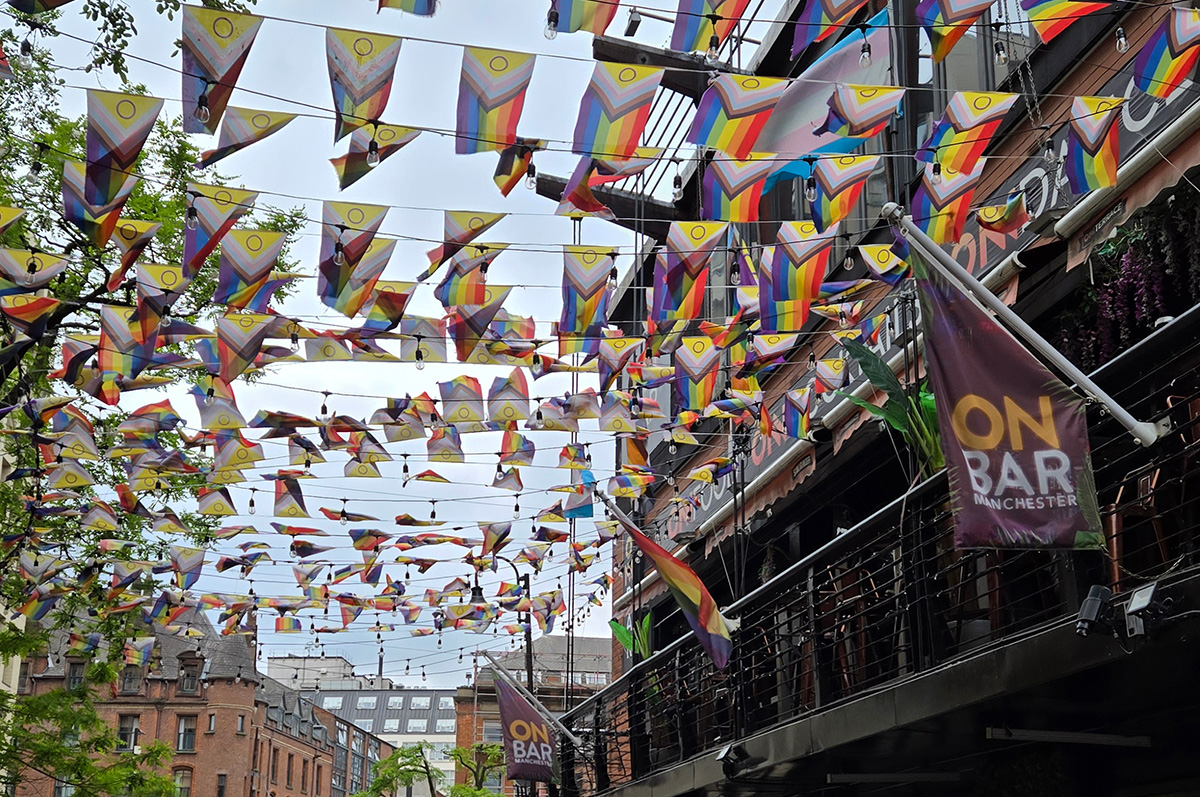
Manchester, England, is not only famous for its industrial heritage, music scene, and football clubs — it’s also home to one of the most vibrant and historically significant LGBTQ communities in the U.K. Often referred to as the “gay capital of the North,” Manchester has been a pioneer in LGBTQ rights, visibility, and celebration, cultivating a culture of inclusivity that continues to thrive today.
The roots of Manchester’s LGBTQ history stretch back centuries, but it was during the 20th century that the city truly became a hub for activism and progress. In 1880, a scandal known as the “Manchester Drag Ball” brought national attention to the city when police raided a fancy dress ball attended by men in drag. Though the incident was used to stigmatize the community, it also marked one of the first widely publicized moments of queer expression in the city.
Manchester is home to several institutions that preserve and celebrate queer history. The LGBT Foundation, based in the city, is one of the U.K.’s leading LGBTQ charities, providing health and support services as well as educational resources.
The city is also immortalized in pop culture as the backdrop for “Queer as Folk,” the groundbreaking 1999 television series created by Russell T. Davies. The show, set in Manchester’s Gay Village, helped bring the realities of LGBTQ life to mainstream audiences and played a pivotal role in shaping public attitudes.
Manchester, is a city that lives and breathes resilience. It’s a place where cobblestone streets echo with the voices of industrial workers, punk rockers, activists, and proud members of the LGBTQ community. I came here seeking stories — some hidden in old libraries, others pulsing through neon-lit streets — and left with a sense of belonging I hadn’t expected.
My base for this journey was the magnificent Kimpton Clocktower Hotel. Located in a former insurance building dating back to the 1890s, it seamlessly marries historic grandeur with modern luxury. Walking through its doors felt like entering a different era. The soaring ceilings, intricate tilework, and dramatic staircases told stories of old Manchester, while the in-room record players spinning tracks by Oasis made sure I knew exactly where I was.
The heart of the hotel is The Refuge, a restaurant and bar that buzzes with energy. Whether sipping cocktails beneath the Winter Garden’s lush greenery or sharing small plates that borrow flavors from around the world, I felt immersed in the city’s welcoming vibe. Even in its luxury, the Kimpton feels like a place for everyone, especially when there is a DJ spinning some cool jazzy beats.
One thing I loved about this property is their “Forgot it? We’ve got it” service. Whether its toothpaste, a shaving kit, or phone charger, the helpful staff have you covered. I tend to forget at least one necessity on every trip. The Kimpton’s central location places guests within walking distance of Manchester’s vibrant cultural scene, including the Palace Theatre, Canal Street, and various shopping and dining options.
My first stop in Manchester was the John Rylands Library, an architectural marvel of neo-Gothic design. I was there specifically to view “The Secret Public” exhibition. It traces Manchester’s underground art scene, especially its ties to queer culture and punk resistance. Flyers, magazines, and photographs are on display.
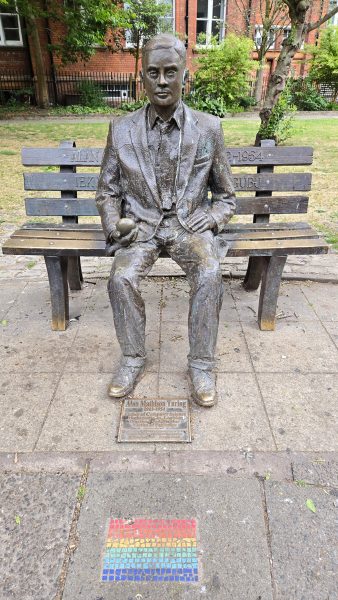
And while we are on the topic of LGBTQ history, the best way to understand Manchester’s queer roots is by talking to the locals. The Free Manchester Walking Tours offers a Queer History Tour, led by passionate guides who have in depth knowledge of the city’s LGBTQ history and culture. We began our tour in Sackville Gardens, home to the Alan Turing Memorial and the Beacon of Hope, a tribute to those affected by HIV/AIDS. It’s a space for reflection, nestled just beside Canal Street’s constant thrum. For those not familiar with Alan Turing, he was a pioneering mathematician and computer scientist, best known for his role in cracking the German Enigma code during World War II, a breakthrough that helped shorten the war and save countless lives. Often regarded as the father of modern computing, Turing laid the theoretical foundation for artificial intelligence. Despite his monumental contributions, he was persecuted for being gay, ultimately leading to his tragic death in 1954. Today, he is celebrated as both a scientific genius and a symbol of the ongoing struggle for LGBTQ rights.
No trip to Manchester would be complete without a night — or three — spent in the Gay Village. Centered around Canal Street, it’s a place that radiates warmth and freedom. What once was a hidden, underground scene in the 1980s has become a global symbol of LGBTQ pride.
During the day, you’ll find people sipping coffee along the canal and by night, the rainbow flags light up the street. Spaces like Via and the Eagle pulse with music and laughter, while Cruz 101 remains a sacred institution for dancefloor devotees. This is more than a party district; it’s a cultural hub, one that has helped shape national conversations and lead by example.
Manchester’s gay scene is more than just nightlife. In the Northern Quarter, I stumbled into Feel Good Club. a queer-owned café that quickly became one of my favorite stops during my trip. Feel Good Club is a café but the space also hosts workshops, mental wellness events, and spontaneous conversations with strangers who somehow feel like old friends. I ordered a bowl of apple-soaked oats and I have to say, it was one of the most delicious and inexpensive things I ate during my entire trip to England. I should have asked for the recipe!
A few blocks away sits Queer Lit, an LGBTQ bookstore filled to the brim with stories I wish I’d had growing up. From queer romance and fiction to books on trans identity and intersectionality, the shop is both cozy and revolutionary. Queer Lit claims to have the largest selection of LGBTQ books in all of Europe. Beyond books, the store hosts events such as workshops, live readings, and book clubs, providing a safe and inclusive space for the community to gather and celebrate queer literature. They also serve a variety of beverages. I would definitely recommend trying one of their hot chocolate drinks.
Though my trip didn’t coincide with Manchester Pride, visitors can expect tens of thousands each August. Pride here features a blend of celebration and activism. From glitter-filled marches to thoughtful panel discussions, it’s a reflection of the city itself: joyful, inclusive, and unafraid to speak truth to power. Importantly, the money raised goes straight back into the community, funding LGBTQ+ health initiatives, charities, and support services. Also in August is SCENE, Manchester’s LGBTQ+ Film and TV Festival, which consists of a week of new and classic LGBTQ cinema and TV screenings, panels, and other events.
All this touring and learning about queer history made me hungry, so for dinner, I ventured to Maray, a Middle Eastern-inspired gem in the city center. Its signature “Disco Cauliflower” — roasted whole and topped with tahini, pomegranate, and harissa — was a revelation. The food, like the city, defied expectations. It was spicy, complex and comforting. I would also recommend trying the crispy sea bass with broccoli slaw. Maray’s vibe is relaxed yet refined, a perfect place to unwind after a day of exploration. Its inclusive, welcoming spirit felt aligned with everything I’d experienced in Manchester so far.
For a more casual dining experience, head over to Freight Island, a unique food hall and entertainment venue located near Piccadilly Station. The venue features a variety of locally owned food stalls including Mia’s Arepas, Ornella’s Little Kitchen and Mega Gyros. It’s a great place to grab a quick bite or cocktail after work with friends.
Manchester may not be as polished as London, but that adds to its charm and intrigue. I tend to enjoy cities like Manchester over their larger neighbors. During my entire stay, I was able to walk to every attraction I visited and by experience, the best way to see a city is on foot. It’s also a great way to burn off those extra calories.
Whether you’re wandering Canal Street at sunset, or simply sipping hot chocolate at Queer Lit, Manchester is a place where you can be yourself and belong.
Enjoy the journey!
Books
Embracing the chaos can be part of the fun
‘Make Sure You Die Screaming’ offers many twists and turns
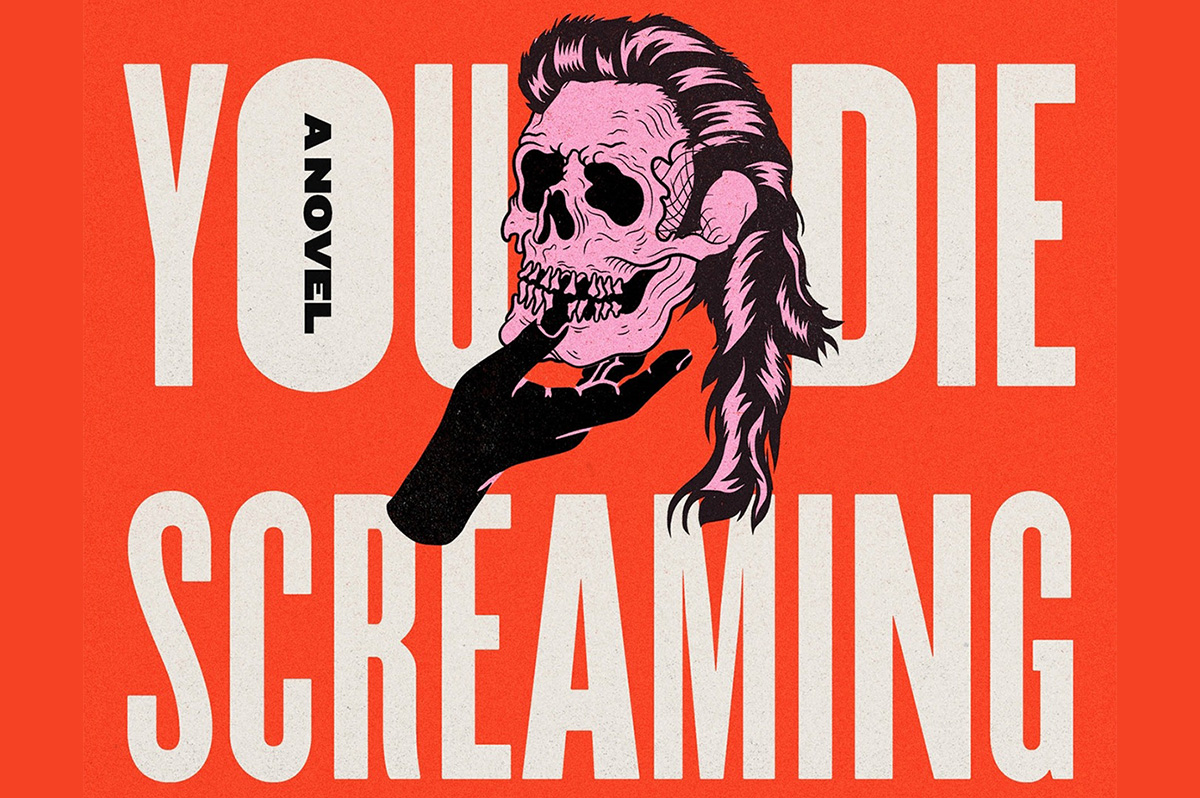
‘Make Sure You Die Screaming’
By Zee Carlstrom
c.2025, Random House
$28/304 pages
Sometimes, you just want to shut the door and forget what’s on the other side.
You could just wipe it from your memory, like it didn’t occur. Or create an alternate universe where bad things never happen to you and where, as in the new novel “Make Sure You Die Screaming” by Zee Carlstrom, you can pretend not to care.

Their mother called them “Holden,” but they’d stopped using that name and they hadn’t decided what to use now. What do you call an alcoholic, queer, pessimistic former ad executive who’s also “The World’s First Honest White Man,” although they no longer identify as a man? It’s a conundrum that they’ll have to figure out soon because a cop’s been following them almost since they left Chicago with Yivi, their psychic new best friend.
Until yesterday, they’d been sleeping on a futon in some lady’s basement, drinking whatever Yivi mixed, and trying not to think about Jenny. They killed Jenny, they’re sure of it. And that’s one reason why it’s prudent to freak out about the cop.
The other reason is that the car they’re driving was stolen from their ex-boyfriend who probably doesn’t know it’s gone yet.
This road trip wasn’t exactly well-planned. Their mother called, saying they were needed in Arkansas to find their father, who’d gone missing so, against their better judgment, they packed as much alcohol as Yivi could find and headed south. Their dad had always been unique, a cruel man, abusive, intractable; he suffered from PTSD, and probably another half-dozen acronyms, the doctors were never sure. They didn’t want to find him, but their mother called…
It was probably for the best; Yivi claimed that a drug dealer was chasing her, and leaving Chicago seemed like a good thing.
They wanted a drink more than anything. Except maybe not more than they wanted to escape thoughts of their old life, of Jenny and her death. And the more miles that passed, the closer they came to the end of the road.
If you think there’s a real possibility that “Make Sure You Die Screaming” might run off the rails a time or three, you’re right. It’s really out there, but not always in a bad way. Reading it, in fact, is like squatting down in a wet, stinky alley just after the trash collector has come: it’s filthy, dank, and profanity-filled. Then again, it’s also absurd and dark and philosophical, highly enjoyable but also satisfying and a little disturbing; Palahniuk-like but less metaphoric.
That’s a stew that works and author Zee Carlstrom stirs it well, with characters who are sardonic and witty while fighting the feeling that they’re unredeemable losers – which they’re not, and that becomes obvious.
You’ll see that all the way to one of the weirdest endings ever.
Readers who can withstand this book’s utter confusion by remembering that chaos is half the point will enjoy taking the road trip inside “Make Sure You Die Screaming.”
Just buckle up tight. Then shut the door, and read.
The Blade may receive commissions from qualifying purchases made via this post.
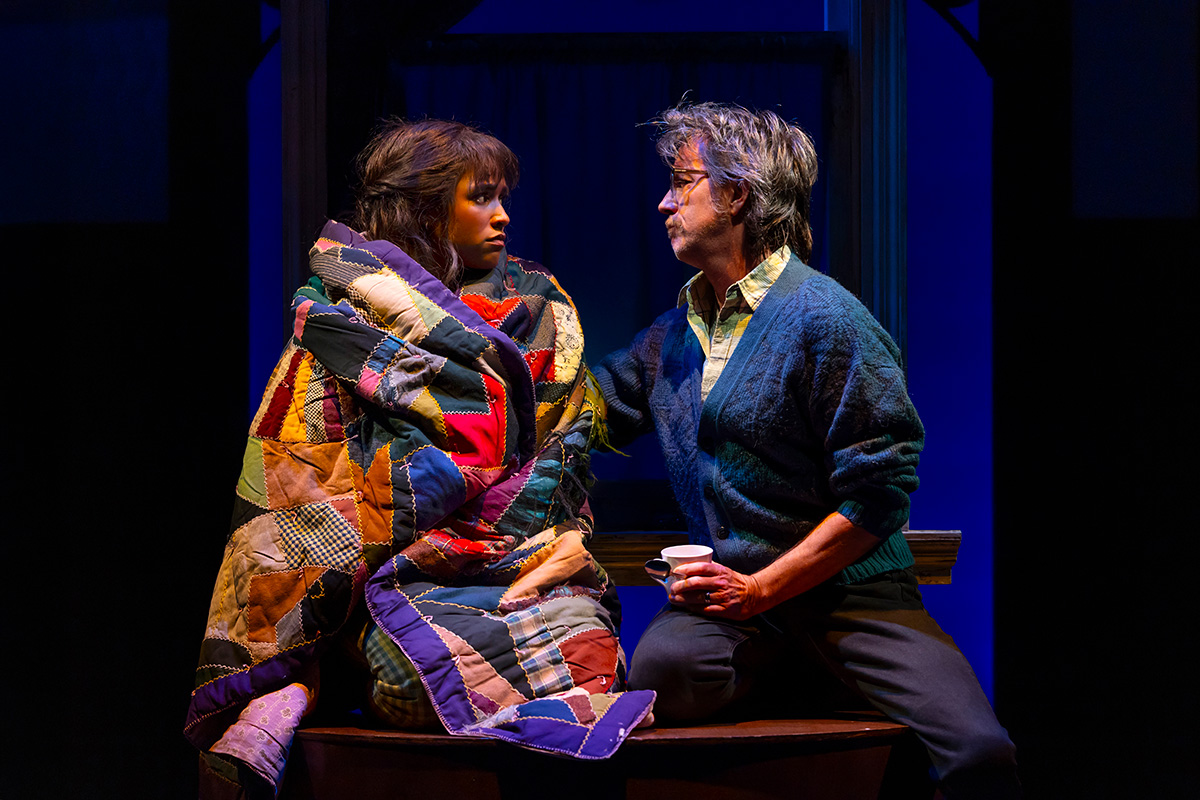
‘A Wrinkle in Time’
Through July 20
Arena Stage
1101 Sixth St., S.W.
Tickets range from $59-$209
Arenastage.org
Currently at Arena Stage, talented out actor and singer Taylor Iman Jones is rekindling an old friendship with an adored character of fiction.
Broadway vet Jones is starring as 13-year-old Meg Murry in “A Wrinkle in Time,” the world-premiere musical adaptation of Madeleine L’Engle’s same-titled book.
For many readers, especially women, the classic 1962 young adult novel, was their first foray into sci-fi, particularly one with a female protagonist.
The story centers on Meg, an awkward schoolgirl whose physicist father has mysteriously disappeared. Now, Meg, her popular friend Calvin, and smart younger brother Charles Wallace are tasked with moving through time and space to find him. Along the way they encounter adventure and evil.
For Jones, 33, playing 13-year-old Meg feels freeing in ways. She says, “As you get older, you’re told to grow up, so I like letting go of some of that. To feel feelings in their rawest form and to tap back into that is fun. I like the spontaneity. There are highs and lows to revisit.”
Born and raised in the San Francisco Bay Area, Jones began piano lessons at just six and soon added band and plays to their pursuits. Following high school, she made a deep dive into California theater for seven years before making the big move to New York in 2017 where after just two months she was singing on Broadway.
The determined and appealing Jones, who lives in New York with their partner, boasts an impressive bio. She has appeared on Broadway as Catherine Parr, Henry VIII’s sixth and final wife in Six, and in the original casts of “Head Over Heels” and “Groundhog Day.” She’s been seen in national tours of “Hamilton” and “American Idiot.”
WASHINGTON BLADE: It seems “A Wrinkle in Time” and Meg mean a lot to a lot of people.
TAYLOR IMAN JONES: The book tells the story of a girl with so much undiscovered power who’s accomplishing things she never imagined that she could.
BLADE: Can you relate?
JONES: Meg wears her emotions on her sleeve. I can certainly relate to that. I’m a Pisces. Sometimes being hyperemotional and very empathetic can feel like a burden, but as I’ve matured, I have realized that it’s not a bad quality. And it’s something I’ve learned to harness and to enjoy. I love that I can play a role like Meg in front of thousands of people.
BLADE: Was “Wrinkle in Time” a book you knew well?
JONES: Oh yeah, it’s a favorite book that lives in my heart and my mind. It’s one of the first books that taught me about the adventure of reading.
BLADE: And playing a favorite character must be a kick.
JONES: It really is.
BLADE: Meg is a big part in a big show.
JONES: This musical is huge. They’re traveling through space and meeting people on different planets. 20-person cast. 30 songs in the show. Quite the undertaking and I’m proud of us. I’m on stage for the entire musical and I sing four or five numbers.
As a mezzo soprano I guess you’d say I have the luxury of being able to do a lot of musicals that span a lot of different genres: rock musical, pop musical, and standards. “A Wrinkle in Time” is contemporary musical theater.
For me, singing is probably the least difficult part of the show. What’s harder for me is the way Meg experiences trauma; I need to be careful when I’m screaming and yelling.
BLADE: It seems mostly women have been involved in making this production happen (book by Lauren Yee; music and lyrics by Heather Christian; directed by Lee Sunday Evans; and choreography by Ani Taj.)
JONES: It’s true, the director, writer, etc., and most of our producers are all women. This doesn’t happen most of the time. For me it means new ideas and fresh energy, and pushing the limits of musical theater.
It’s also created a wonderful space in which to work. It can be more generous, and understanding. And centering the story on a young girl is something we can all relate to.
BLADE: Will “A Wrinkle in Time” resonate with queer theatergoers and their families?
JONES: I think so, especially on the heels of pride month. It’s truly a show for all ages about finding your inner strength and fighting for the things that you love; not letting evil win over the power of good, and not just for yourself but for those around you too.
-

 U.S. Supreme Court3 days ago
U.S. Supreme Court3 days agoSupreme Court to consider bans on trans athletes in school sports
-

 Out & About4 days ago
Out & About4 days agoCelebrate the Fourth of July the gay way!
-

 Virginia4 days ago
Virginia4 days agoVa. court allows conversion therapy despite law banning it
-
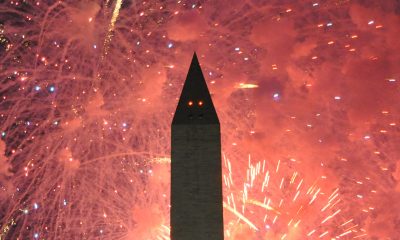
 Opinions4 days ago
Opinions4 days agoCan we still celebrate Fourth of July this year?

